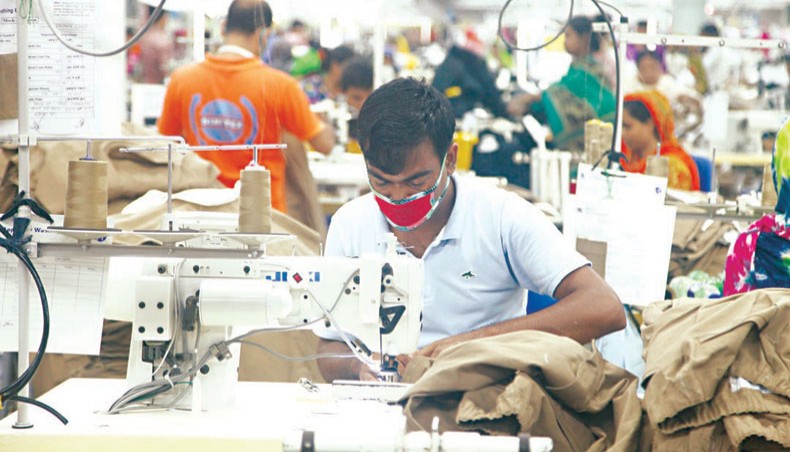
Employment in the country’s readymade garment sector witnessed only 1.07 per cent growth a year from 2015 to 2020, according to a study report released on Saturday.
The study titled ‘Socio-economic Profile of Garment Workers of Bangladesh’ conducted by the Asian Center for Development estimated that the total number of workers employed in the RMG sector increased to 4.22 million in 2020 from 4 million in 2015.
Out of 4.22 million workers, 1.72 million are male and 2.50 million are female.
In 2015, the total number of male workers in the RMG sector was 1.10 million while the female workers were 2.59 million, the report showed.
The Bangladesh Garment Manufacturers and Exporters Association and the ACD jointly published the report through a virtual event.
‘Despite the fact that many factories were closed down in the aftermath of the Rana Plaza accident, our estimate shows an increase in the number of workers per factory and factories are about 70 per cent larger than that of 2014,’ the study said.
It showed that between 2015 and 2020, the number of RMG workers in Bangladesh grew by 1.07 per cent a year and the growth rate is 4 per cent positive for male workers and 0.7 per cent negative for female workers.
‘Only one per cent employment growth rate indicates that like the previous years, the aggressive growth in employment in the readymade garment sector would not take place in the coming years. Exports will increase through the productivity enhancement not through the increasing of the number of labour,’ Centre for Policy Dialogue distinguished fellow Mustafizur Rahman told New Age on Saturday.
He said that labour displacing technology had been introduced in the RMG sector and Bangladesh should look for alternative sectors to create employment.
The ACD survey showed that in 2014, monthly family expenditure of RMG workers was around Tk 11,320 and the expenditure increased by 7 per cent a year between 2014 to 2020 while income also increased by 7 per cent in the period.
Although the income of workers increased 7 per cent against the 7 per cent increase in expenditure, the study claimed that the monthly savings of the workers rose by 8 per cent during the period.
Mustafizur said that the increase in workers’ income by 7 per cent a year was nominal and inflation was not adjusted and the increase did not result in any change in the purchasing power of workers.
ACD executive director AK Enamul Haque presented the report that was prepared based on randomised survey conducted on 1,119 workers and managers from 320 factories.
Labour secretary KM Abdus Salam, BGMEA president Rubana Huq, Policy Research Institute executive director Ahsan H Mansur, International Labour Or ganisation country director Tuomo Poutiainen and European Union ambassador to Bangladesh Rensje Teerink, among others, attended the virtual event.
According to the report, nearly 89 of the RMG workers migrated to the factory locations from other districts and the rest were local.
Workers have migrated to the factories from almost all the districts of the country and the top 10 districts from where most of the workers have come are Mymensingh, Rangpur, Cumilla, Barishal, Sirajganj, Dinajpur, Jamalpur, Chatttogram, Gaibandha and Bogura and they comprise nearly 45 per cent of the RMG workers, it said.
The report said that the average age of workers of RMG sector in Bangladesh was 25.9 years and the average length of service was 9.2 years.
‘We have found that on average male workers expect to work for 11 years and the number is 8 years for female workers. Female workers seem to retire from work earlier than their male counterpart,’ it said.
The report said that there were around 2,200 foreign professionals in nearly 15 per cent of the RMG factories in Bangladesh.
Most of the foreign nationals were engaged in management positions, followed by technical operations and merchandising, it said.
